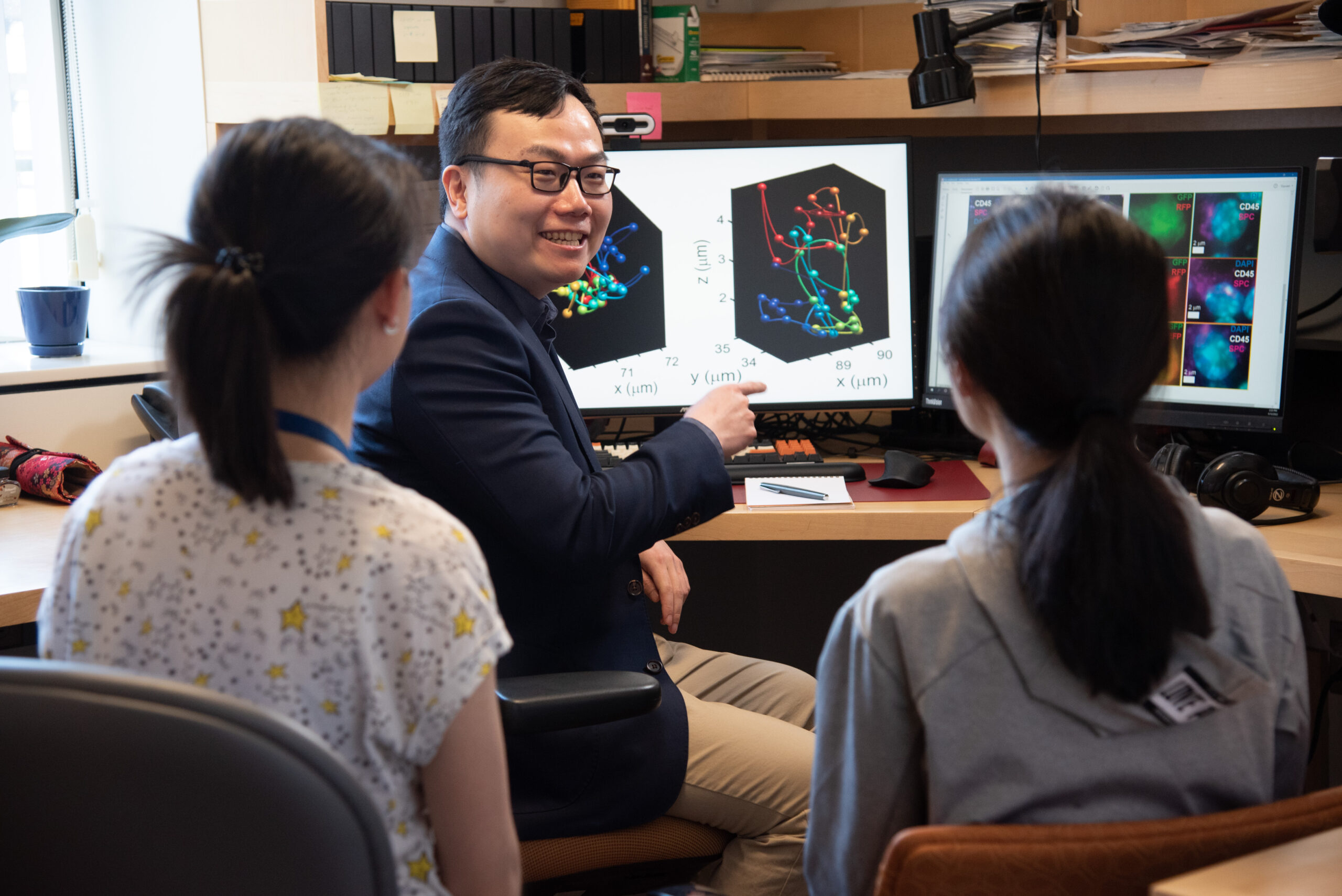Siyuan (Steven) Wang, PhD ‹ Back To 2022 Winners
2022 Winners
Assistant Professor
Genetics and Cell Biology
Yale School of Medicine
Vision
Our genome is highly spatially organized, and this organization is critical to control many genome functions. Three-dimensional (3D) genome changes are strongly implicated in cancer. Here we plan to discover key regulators that drive these 3D genome transitions as cancer cells progress. These regulators may serve as novel therapeutic targets to halt, or even reverse cancer. Our vision is to develop a technology to screen thousands of genes genome-wide and systematically identify these potential therapeutic targets in parallel and in an unbiased manner. The impact of this work is that we will open up an entirely new avenue for mechanistic and therapeutic target discovery based on controlling the 3D genome in cancer.
Siyuan (Steven) Wang, PhD, is an Assistant Professor of Genetics and Cell Biology at Yale School of Medicine. Research in his lab focuses on the development and application of state-of-the-art image-based omics approaches to understand the spatial organization of mammalian genome and transcriptome, and how they impact cellular states. Originally from China, Dr. Wang received a Bachelor of Science degree in Physics from Peking University in 2007. He then moved to the US and received a Ph.D. in Molecular Biology from Princeton in 2011 and later his postdoctoral training at Harvard. In 2017 he was appointed Assistant Professor by Yale University. Dr. Wang developed/co-developed multiple influential technologies in the spatial omics field including the first-in-kind image-based 3D genomics method termed “chromatin tracing” to trace the spatial folding of genome, “MERFISH” for spatial transcriptome profiling (Nature Methods Method of the Year 2020), and “MINA” to measure multiscale chromatin folding, copy numbers of numerous RNA species, and associations of numerous genomic regions with nuclear landmarks in the same, single cells in mammalian tissue. He received the 2011 American Physical Society Award for Outstanding Doctoral Thesis Research in Biological Physics (1-2 recipients per year worldwide), the 2012-2015 Jane Coffin Childs Fellowship, the 2016 International Union of Pure and Applied Physics Young Scientist Prize in Biological Physics (one recipient per year worldwide), the 2017 Harvard Chinese Life Sciences Distinguished Research Award, the 2018 35 Innovators Under 35 of China by MIT Technology Review, and the 2019-2024 NIH Director’s New Innovator Award.
Development of Novel Technologies to Discover Cancer 3D Genome and Transcriptome Regulation
 Each of our cells usually contains about 2 meters (6 feet) of genomic DNA compactly folded into the cell nucleus. The three-dimensional folding architecture of DNA is critically important for ensuring the correct gene expression programs. Abnormal DNA-folding structure predictably leads to disease, and is a hallmark of cancer. Yet, due to the absence of appropriate research techniques, it is largely unknown how cancer DNA folding architectures and spatial gene expression patterns are established and regulated.
Each of our cells usually contains about 2 meters (6 feet) of genomic DNA compactly folded into the cell nucleus. The three-dimensional folding architecture of DNA is critically important for ensuring the correct gene expression programs. Abnormal DNA-folding structure predictably leads to disease, and is a hallmark of cancer. Yet, due to the absence of appropriate research techniques, it is largely unknown how cancer DNA folding architectures and spatial gene expression patterns are established and regulated.
“Truly groundbreaking work often requires one to boldly pursue unestablished, high-risk directions. “First in kind” by definition indicates the absence of prior examples. The Pershing Square Sohn Prize will allow us to pursue such high-risk, high-reward research that has the potential to open up an entire new avenue for cancer therapeutics.”
 This study will combine cutting-edge technologies to invent a new methodology that will enable the efficient discovery of genes that regulate changing DNA folding architectures and gene expression patterns in multiple cancer types. The regulatory genes discovered through this work will provide candidate genes to be tested as potential drug targets for new therapies. Inhibiting or inducing these genes may modulate the aberrations in DNA folding or spatial gene expression patterns in cancer, and lead to positive therapeutic outcomes. The new technology will be broadly applicable to other types of cancer, and will lead to a new category of cancer therapeutics targeting DNA folding and spatial gene expression patterns.
This study will combine cutting-edge technologies to invent a new methodology that will enable the efficient discovery of genes that regulate changing DNA folding architectures and gene expression patterns in multiple cancer types. The regulatory genes discovered through this work will provide candidate genes to be tested as potential drug targets for new therapies. Inhibiting or inducing these genes may modulate the aberrations in DNA folding or spatial gene expression patterns in cancer, and lead to positive therapeutic outcomes. The new technology will be broadly applicable to other types of cancer, and will lead to a new category of cancer therapeutics targeting DNA folding and spatial gene expression patterns.
“Innovation is the creation of the previously nonexistent and/or the discovery of the previously unknown, which often starts with the realization of the previously never-thought-of. Innovation is itself the expansion of the collective intelligence of the human species that transcends our time. It is our legacy for humanity as scientists
and a part of us that lives on.”